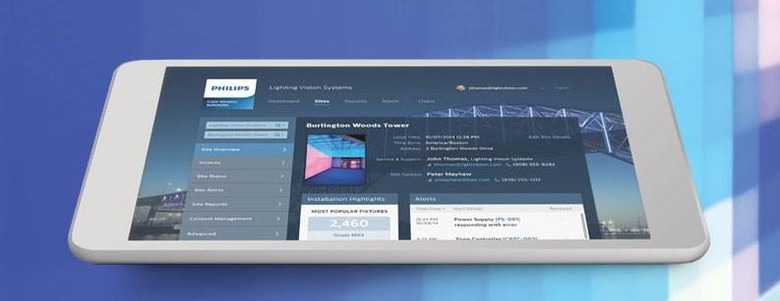America's Smartest Bridge Is Going To Dazzle You
America is gaining its smartest bridge, with the Tappan Zee Bridge – aka "The New NY Bridge" – debuting a slick LED lighting system that promises lower power and more flexibility. The project, a 3.1 mile long stretch across the Hudson River, will be outfitted with more than 3,000 LED lights from Philips, including many which can change color just like the company's hue lamps for the home. When I caught up with Eric Rondolat, CEO of Philips Lighting, he argued it was the natural next step for connected living.
"If you want to have a smart city, you need to have smart factories, smart buildings, smart roads, and smart homes," the chief exec told me.
While lighting may only be a single part of that smart ecosystem, it's not a small one. "Lighting makes up 20-percent of global energy consumption," Rondolat pointed out.
The smart lighting I'm most familiar with is color-changing hue bulbs, which can be organized into zones in the home or office and adjusted remotely into colorful scenes. It's become one of the most popular platforms for easily installing smart lamps, with everything from a battery-free switch through to an Apple Watch app.

The New NY Bridge will get a version of that – hue on steroids, as it were – with two combined Philips systems. Around 2,700 Color Kinetics LED fixtures will be installed, capable of changing to a variety of colors, along with 500 RoadView LED Luminaires for full-spectrum white light.
Bridges with fancy lights aren't new – San Francisco's Bay Bridge, for instance, has a long-standing lighting installation that shows animations and patterns at night – but what helps distinguish Tappan Zee is the cloud-based software.
Both the Color Kinetics and the RoadView LEDs are managed by Philips' Active Site and CityTouch dashboard, for a combination of readily-customized light patterns and smarter activation. For instance, the bridge could show sports team colors during a big game, but at the same time automatically switch into a low-power mode when no road traffic is detected.
Even maintenance should be cheaper, since the remote monitoring will allow bridge administrators to keep a virtual eye on any failing LEDs, only dispatching engineers when absolutely necessary. Philips predicts the lighting will use 75-percent less power than a comparative traditional system, too.
Of course, we're still some way from an entirely smartened-up city. One ideal, I suggested to Rondolat, could be a bubble of light that follows you from home, to car, to office, and then back again, though that could open the door to privacy concerns.
Just with things like hue's geofencing support however, Rondolat countered, "there's lots we could do with what's already installed."
The Tappan Zee bridge is expected to open in late 2018.
Update: An earlier version of this story mistakenly stated the opening as taking place in 2016.
MORE Philips ActiveSite
